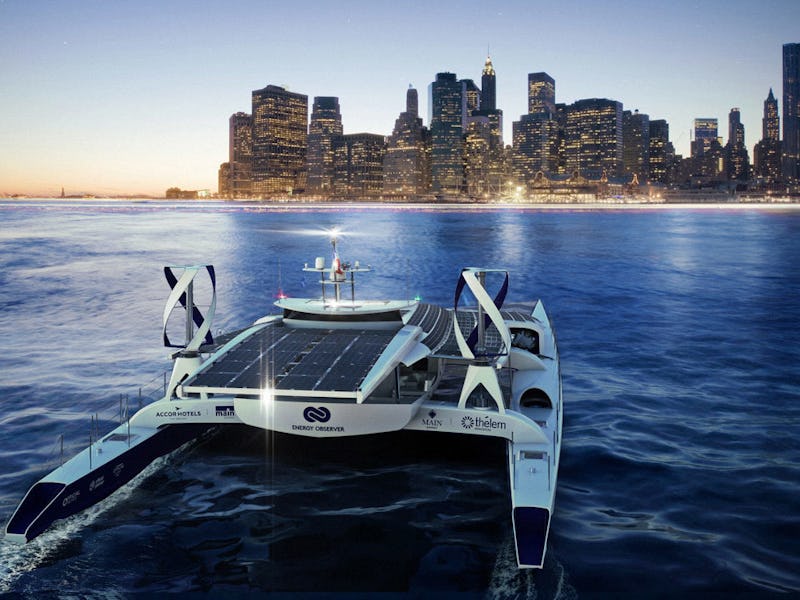An all-electric, hydrogen-powered ship is about to journey around the world for the next six years. On this journey, it will visit 50 different countries and make 101 stops, where it will show off the technology it has onboard.
“I have always sailed for the thrill of the competition and today, I have decided to to sail for another reason, out of commitment to our planet,” says Victorian Erussard, offshore racer, Merchant Navy officer, and captain of the Energy Observer.
A 100-foot long catamaran that had a successful racing career before it was converted into a clean-energy vessel, Energy Observer is a $5.25 million ship will use solar, wind, and hydrogen energy to power its electric motors.
A cross-section of the 'Energy Observer'
Here’s how the ship moves: There are two vertical axis wind turbines on the back of the ship. Most of the surface area is covered in two different types of solar panels. Along the sides of the yacht are regular solar panels that have been heat-molded to bend and cover the entire surface. Over the back of the middle and edges of the catamaran are bifacial panels, which can absorb the direct sunlight into the top of the panel and light reflected up from the water underneath.
The little sail floating above the boat is a smart traction kite, which creates electricity as it moves up and down in the breeze. The engines on the ship are electric and reversible, allowing them to turn into hydro-generators and gather power from moving through the water some of the time.
Energy is stored in lithium-ion batteries for short-term use, but the main source of energy is from the conversion of seawater into hydrogen fuel. Demonstrating the production and use of hydrogen as a clean energy is one of the main points of the _Energy Observer_s mission.
A publicity video for the project suggests that the ship will travel around France in 2017, and then move to the Mediterannian in 2018, and Northern Europe in 2019. In 2020 it will attempt the trans-Atlantic and head to the Americas (focusing on North and Central). In 2021, it wil journey to the trans-Pacific and go on a tour of Asia and Oceania, visiting India, Africa, and the Middle East to end its trip in 2022.
The Energy Observer is a renovated racing catamaran from 1983 that had a long competitive history. In 1994, as ENZA New Zealand the boat won the Jules Vern Trophy for the fastest sail around the world. Although the path of the Energy Observer is not for speed this time, its 50-country and 101-stop voyage is a fitting statement to the legacy of the boat and the transition to clean power.
